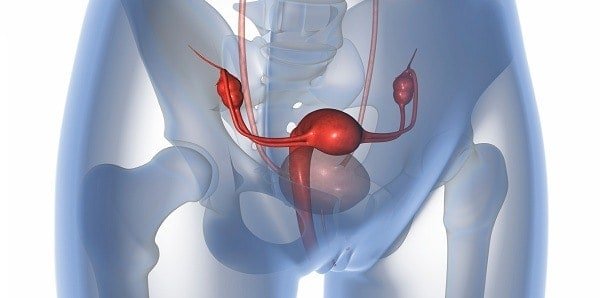Prolapsed uterus

Uterine prolapse or prolapsed uterus is an incorrect position of the female reproductive organ, the displacement of its bottom and neck beyond its anatomical-physiological limits, as a result of the weakening of the muscles on the pelvic floor and uterine tendons.
It manifests as a feeling of pressure, discomfort, pulling pain in the lower abdomen and in the vagina and dysuria – increased frequency and difficulty urinating, inability to hold urine and abnormal vaginal discharge.
p>
A complication such as partial or complete prolapse of the uterus may occur.
The most common variants of incorrect placement of the internal genital organs of women are prolapse of the uterus and its prolapse – uterocele.
During contraction, the fundus and cervix slide below their anatomical limits, but the cervix does not show through the genital slit, even with physical exertion.
Prolapse of the uterus outside the genital opening is defined as prolapse. The contraction of the uterus precedes its complete or partial prolapse.
In the majority of patients, the prolapse and prolapse of the uterus is accompanied by a downward displacement of the vagina as well.
Uterine prolapse is one of the fairly common pathologies occurring in women of all ages, it is diagnosed in about 10% of women under 30 years of age, and in the age group of 30-40 years it is found in 40% of women, and at the age of 50 it occurs in almost half.
15% of all operations on the female genitalia are performed for prolapse or prolapse of the uterus.
Retraction of the uterus is associated mainly with weakening of the tendon apparatus of this organ, as well as the muscles and fascia of the pelvic floor and often leads to prolapse of the rectum /rectocele/ or bladder /cystocele/, which are accompanied by a disorder of the functions of these organs.
Uterine prolapse often begins to develop in childbearing age and progresses over time.
When uterine prolapse progresses, it becomes the cause of functional disorders that cause physical and moral suffering to the affected woman and often leads to partial or complete loss of working capacity.
The position of the uterus is considered normal when it is located in the small pelvis, at an equal distance from its walls, between the rectum and the bladder.
Uterine body has an inclination forward, forming an obtuse angle between the neck and the body of the organ. And the cervix forms an angle with respect to the vagina, equal to about 70-100 degrees.
The outer part of the cervix is located in close proximity to the back wall of the vagina.
The uterus has sufficient physiological mobility and can change its location depending on the amount of contents of the rectum and the volume of the bladder.
Treatment of prolapsed uterus
When the prolapse of the uterus does not reach the genital slit and does not disturb the function of the neighboring organs, conservative treatment is applied, which may consist of:
• Physiotherapy exercises to strengthen the pelvic floor and abdominal muscles. In such cases, Kegel exercises are very useful.
• Gynecological massage;
• Hormone replacement therapy with estregons, which strengthen the uterine tendons;
• Local application in the vagina of ointments containing metabolites and estrogens;
• Moving the woman to another job that does not require excessive physical exertion.
If it is impossible to carry out surgical treatment in connection with the prolapse or prolapse of the uterus, the use of vaginal tampons and pessaries, which are thick rubber rings of different sizes, is most often shown in elderly patients .



